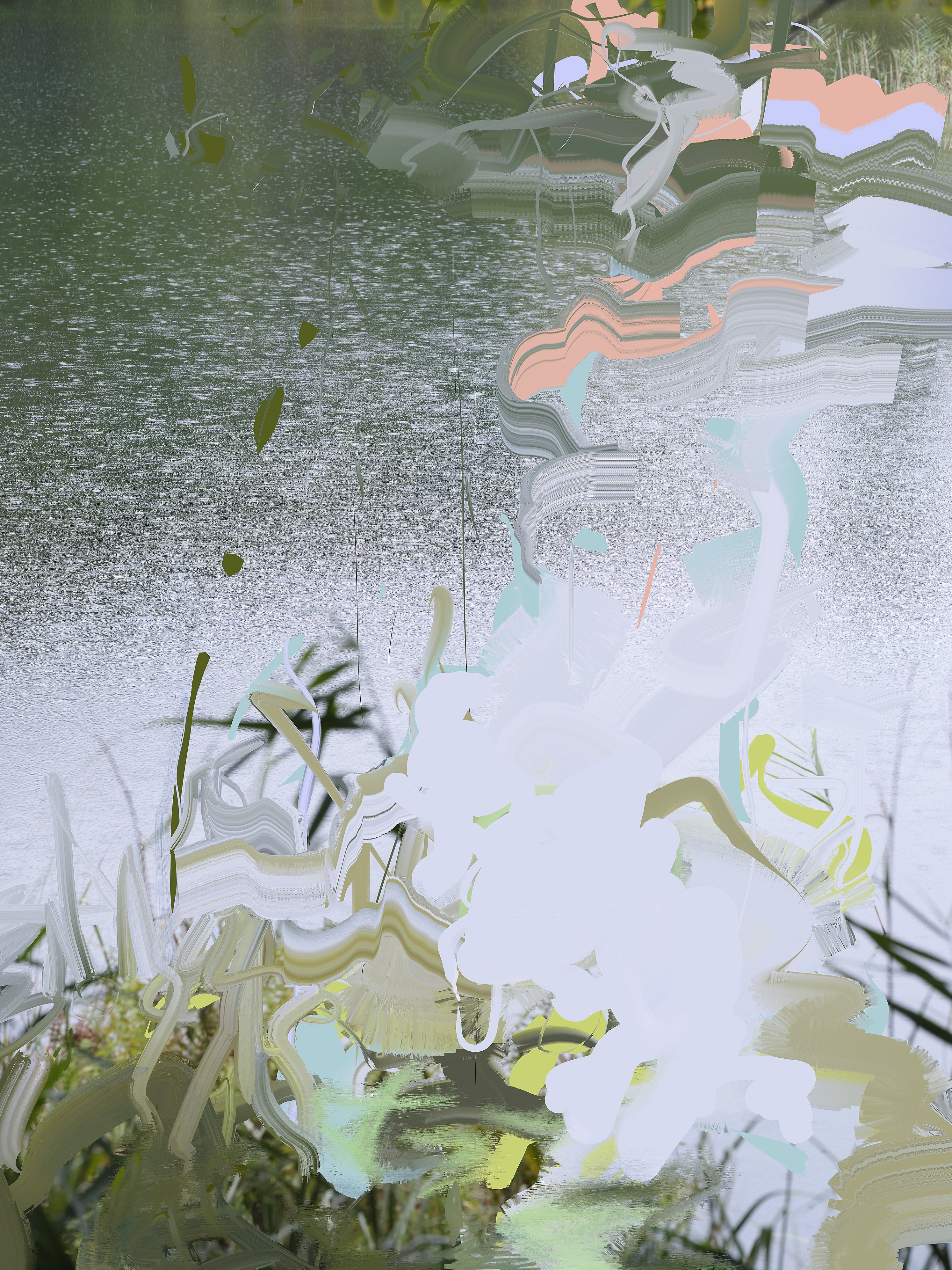Exhibition: 27 April – 28 June 2023
Opening: Friday, 28 April 2023, 6 – 9 pm
Venue: Persons Projects, Lindenstr. 34, 10969 Berlin
On the occasion of Gallery Weekend Berlin 2023, Persons Projects is
proud to present the group exhibition Refractive Landscapes. The show
focuses on a selected group of artists from the Helsinki School who use
abstraction as their mutual language in heightening our awareness of
environmental changes in our natural surroundings. By using different
photographic methods, the presented artworks capture the transformation
of light through time and unveil the collective poses of change. Sharing
an openness of form as well as a lack of sharpness of lines, the
presented works bridge a conceptual dialogue between photography and
painting that float on time, not in it.
The works of Sandra Kantanen are defined by the harmonic unity when photography merges with painting. As the artist has been trained in both fields, she has always had a strong penchant for using light in a painterly way in her photographs. This practice can be seen in her more recent works, such as Untitled (Rain 1). It exemplifies how Kantanen can perfectly balance out the image’s composition through blurring and brush-stroking the color pixels. By using the photographic process of multiple exposures and inserting digital brush strokes, Kantanen blurs the line between what we see in the image and how it makes us feel in the same tradition as the Impressionists. The amount of detail Kantanen layers into her photographs leaves the viewer with a sense of tangibility that resonates with her poetic interpretations.
What Sandra Kantanen and Eeva Karhu have in common, is the way they both "paint” with light. Karhu utilizes the photographic process of layering one image upon another as her method for collecting the passage of time as well as the natural changes in the environment. This is most evident in her ongoing Path series, where she photographs the same walking route she takes from her home. After her walk, she compiles all the photographs together into one image to form the given moment they were taken in. Karhu continues this process throughout the year, creating her own visual calendar of time periods based on the harvesting of light from one moment to the next. The layering produces a similar visual appearance to brush strokes. Only as one gets closer to the artworks, they resemble less of a painting and more of a photograph, as all the small photographic details. The final result of her unique process is a timeless vision of nature, pulled together by fragmented pieces that form one harmonious feeling. Recording both the time of her own movements and the longer cycles of nature, her work intertwines into a personal study of perception and its fundamental links with space and time.
In the same way as an Impressionist repeatedly turns to the same subjects, Santeri Tuori has been taking photographs on the remote island of Kökar for the past fifteen years. His Forest series, which is divided into prints and moving images, presents certain chosen landscapes that the artist has been photographing over and over again from the exact same spot. Just like Eva Karhu, Tuori superimposes his images on top of each other – thereby making even the slightest change in the landscape visible to the eye. The resulting images not only blend black and white and color photographs but also link together different time periods or even years in the same landscape. Time in these works cannot be counted, not in years, not in split seconds. Time just is.
Jorma Puranen has dedicated his most recent body of works, Momentary Landscape, to the depiction of momentariness. As a continuation of his ongoing series Icy Prospects, in which the artist creatively merges aspects of mythology with the fascination with the Arctic, Puranen now shifts his focus towards exploring the surroundings of his home in Finland. He states, "For over fifteen years, I have been engaged in landscape-related projects in which I have aimed to generally prevent the beholders from the opportunity of directly admiring the scenery by putting something in between them and the subject." What the viewer might not know is that these works, such as Seascape after the Rain 7, only show illusions of landscapes: Puranen painted a board with black, high-gloss acrylic and then took long exposures of the landscapes mirrored in the wet wooden surface. The results are not only extremely painterly and highly aesthetic but fragmented impressions of nature in which the board's surface with the morning dew and the landscapes reflection are inseparably superimposed. They exemplify Puranen's idea of preserving the moment when the first drops of rain fall upon the mirrored board, abstracting the reflection of his view with a memory.
